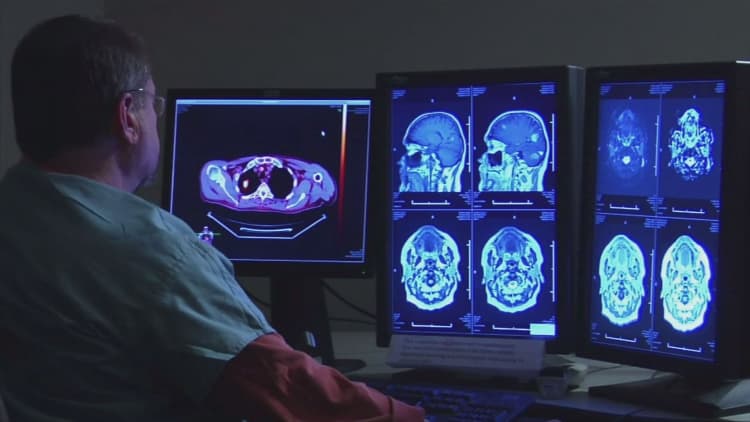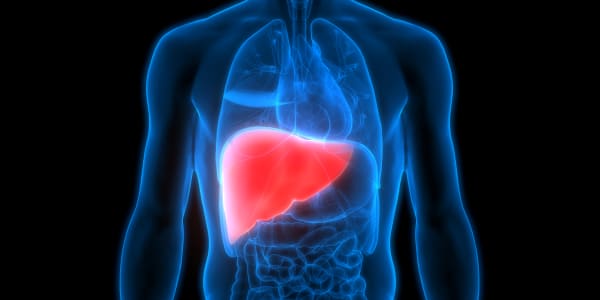After four decades of progress preventing strokes that affect 800,000 Americans and kill up to 140,000 annually, progress has stalled, and in some states strokes are again increasing, according to a new report from the Centers for Disease Control and Prevention.
The study, released Wednesday, shows that stroke death rates failed to continue to decline in 38 states during the 2013–2015 period, resulting in an estimated 32,593 excess stroke deaths that may not have occurred based on previous rates of decline. The data was compiled by the U.S. National Vital Statistics System from the National Center for Health Statistics at the CDC. The increase came after successive declines in stroke deaths for every three-year period studied by the CDC between 2000 and 2013.
Today strokes are the fifth-leading cause of death in the country, but 80 percent of strokes are preventable, according to the World Health Organization.
A stroke occurs when blood flow to an area of brain is cut off and brain cells are deprived of oxygen and begin to die, resulting in the loss of abilities, such as memory and muscle function, controlled by that area of the brain.
Strokes can often be prevented by two methods. Dr. Quanhe Yang, senior scientist, Division for Heart Disease and Stroke Prevention at the CDC, said one is by adopting a healthy lifestyle, such as not smoking, eating a healthy diet that is low in salt and sugar and high in fruits and vegetables, being physically active and maintaining healthy weight. The second is by better managing the risk factors. "If you have high blood pressure, high cholesterol or diabetes, you need to keep them under control by maintaining a healthy lifestyle and taking the proper medications," Yang said.
This is a wake-up call. We have to remember that 80 percent of strokes are preventable. Every one of us can do something to regain the momentum in the decline of the number of strokes.Dr. Quanhe Yangsenior scientist, Division for Heart Disease and Stroke Prevention at the CDC
Obesity is another cause for concern, because it is a major cause of hypertension, which is the single most important modifiable risk factor for stroke, according to the CDC report. Despite recent improvements, nearly half of the 75 million U.S. adults with hypertension do not have their blood pressure under control.
More from Modern Medicine:
America's No. 1 killer taking center stage in fight over drug prices
One third of Americans on way to diabetes, and most don't know it
Efforts to prevent heart disease run into a brick wall
The current stall in progress preventing strokes is taking place in 3 out of 4 states across the United States and, surprisingly, not just in the 11 states in the Southeast known as the Stroke Belt, because those states have had higher stroke death rates historically than the U.S. average. Those states are Alabama, Arkansas, Georgia, Indiana, Kentucky, Louisiana, Mississippi, North Carolina, South Carolina, Tennessee and Virginia.
The CDC study could not conclude that any single factor or group of factors is directly responsible. However, poor diet, physical inactivity and lower-than-average social economic status — which often results in a lack of access to health insurance coverage and access to medical care — all contribute to the higher rates of strokes in these states and around the country, Yang said.
Signs of a stroke
Recognizing the signs and symptoms of a stroke and understanding the importance of calling 911 is critical to ensuring that stroke patients receive the best care as quickly as possible. Stroke symptoms tend to occur suddenly. Signs to look out for include weakness or numbness on one side of the body, confusion, trouble speaking or understanding, trouble seeing in one or both eyes, trouble walking, dizziness or loss of balance or severe headache.
The American Stroke Association tells people to remember the acronym FAST, which can be used as a mnemonic to help detect and respond quickly to stroke victims. The acronym stands for "Facial drooping,"Arm weakness," "Speech difficulties" and "Time to call 911."
Yang said if you think someone is having a stroke, you should first ask the person if they are able to smile, to see if one side of the face is drooping. Next, ask the person to raise both arms up to check for arm weakness. Then ask the person to repeat a sentence to see if they can speak clearly, and then call 911 immediately.
Time is of the essence because while a person is having a stroke, their brain cells are dying, so it's imperative that they get the care they need immediately. "Get the person an ambulance and get them to the hospital so that they can get the proper treatment," Yang said. "This will increase the chance of survival. Every minute counts," he added. Yang does not recommend driving yourself or someone having a stroke to the hospital. An ambulance can alert the hospital to the person's arrival and get the necessary equipment ready.
A person having a stroke is typically experiencing a blood clot, so "clot busting medication" will be necessary, he said. "It's a very time-sensitive procedure, and after three to five hours the effectiveness of procedure is greatly reduced."

Emergency medical services and hospitals also need to provide better care. To confront this issue, the CDC established the Paul Coverdell National Acute Stroke Program, named after the late Republican Senator from Georgia, who died in 2000, at age 61, from a massive stroke.
"This program was designed to help the states to improve the quality of care and treatment of stroke patients, from symptoms, to getting to the hospital, to in-care hospital care and out patient care," Yang said. The Coverdell program is working with hospitals in nine states to develop coordinated systems of care to reduce stroke-related death and disability. It is also working closely with partners in healthcare to enhance the quality of stroke care through data-driven quality improvement in approximately 570 hospitals, which have treated more than 620,000 acute stroke patients in the United States since 2005.
The Million Hearts initiative, co-led by the CDC and the Centers for Medicare & Medicaid Services — and supported by many public and private partners — is also working on initiatives that they believe could help to prevent 1 million heart attacks and strokes by 2022. They include getting the word out about intervention methods and convincing people to reduce their sodium (salt) intake, cut out tobacco use, and start exercising. They are also telling people to improve implementation of the "ABCS" method of prevention, which include taking aspirin when appropriate, keeping one's blood pressure under control, managing one's cholesterol, and quitting smoking.
Health-care providers should also be looking out for patients who may need to begin cardiac rehabilitation, and should be focused in particular on priority populations at high risk for heart disease and stroke. The data also showed a statistically significant increase among the subset of Hispanic-Americans, with a 5.8 percent annual increase, and among the population of the South Census Region, at an increase of 4.2 percent. In Florida alone, there was a 10.8 percent increase. "This is a wake-up call," Yang said. "We have to remember that 80 percent of strokes are preventable. Every one of us can do something to regain the momentum in the decline of the number of strokes."
An alarming increase among younger Americans
Yang added that one-third of stroke cases take place in people who are 35 to 64 years-old. But the study also found that more young people are being hospitalized with the increased risk factors for stroke. "In the U.S. we do have an epidemic of obesity and diabetes. One in three adults in the U.S. is obese, and that's a problem, because obesity can cause high blood pressure, which is the primary risk factor for a stroke," he said.
Recent studies reported that in the past 15 years, younger adults have experienced a significant increase in both stroke hospitalizations and in associated stroke risk factors, such as hypertension, obesity, diabetes, high cholesterol, and tobacco use. Changes in modifiable stroke risk factors might present new challenges for stroke prevention and a sustained decline in stroke mortality in U.S., according to the CDC report.
A report published in June by the Journal of the American Medical Association found that stroke hospitalization rates for younger adults significantly increased from 2003 to 2012; among men (41.5 percent) and women (30 percent) aged 35 to 44 years. It also found a near doubling of the prevalence of three or more of the common stroke risk factors among both men and women aged 18 to 64 years who were hospitalized due to strokes.
Diabetes is another risk factor. Currently, there are 30 million people in the U.S. with diabetes, 85 million with prediabetes, and 75 million adults with high blood pressure, and only half of those are under control. "If you put this all together, we have a very significant situation here, and a change in the risk profile in the population. That is why it is of great concern," he said. "This short term trend may become a larger one. Healthy lifestyle plays a big role in the reduction of stroke risk and death."
—By Leslie Kramer, special to CNBC.com




